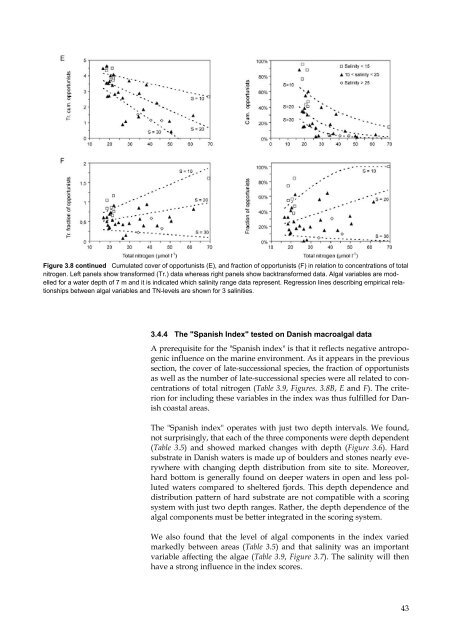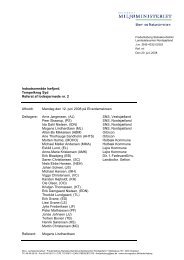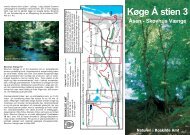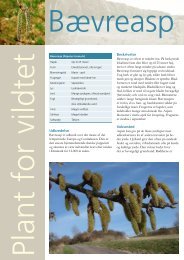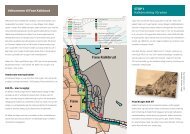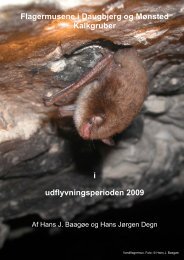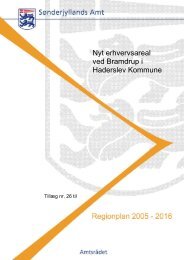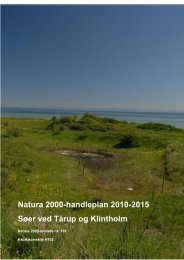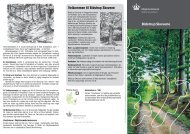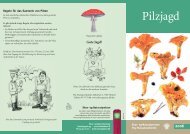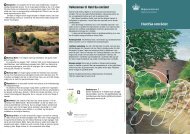Macroalgae and phytoplankton as indicators of ... - Naturstyrelsen
Macroalgae and phytoplankton as indicators of ... - Naturstyrelsen
Macroalgae and phytoplankton as indicators of ... - Naturstyrelsen
Create successful ePaper yourself
Turn your PDF publications into a flip-book with our unique Google optimized e-Paper software.
Figure 3.8 continued Cumulated cover <strong>of</strong> opportunists (E), <strong>and</strong> fraction <strong>of</strong> opportunists (F) in relation to concentrations <strong>of</strong> total<br />
nitrogen. Left panels show transformed (Tr.) data where<strong>as</strong> right panels show backtransformed data. Algal variables are modelled<br />
for a water depth <strong>of</strong> 7 m <strong>and</strong> it is indicated which salinity range data represent. Regression lines describing empirical relationships<br />
between algal variables <strong>and</strong> TN-levels are shown for 3 salinities.<br />
3.4.4 The "Spanish Index" tested on Danish macroalgal data<br />
A prerequisite for the "Spanish index" is that it reflects negative antropogenic<br />
influence on the marine environment. As it appears in the previous<br />
section, the cover <strong>of</strong> late-successional species, the fraction <strong>of</strong> opportunists<br />
<strong>as</strong> well <strong>as</strong> the number <strong>of</strong> late-successional species were all related to concentrations<br />
<strong>of</strong> total nitrogen (Table 3.9, Figures. 3.8B, E <strong>and</strong> F). The criterion<br />
for including these variables in the index w<strong>as</strong> thus fulfilled for Danish<br />
co<strong>as</strong>tal are<strong>as</strong>.<br />
The "Spanish index" operates with just two depth intervals. We found,<br />
not surprisingly, that each <strong>of</strong> the three components were depth dependent<br />
(Table 3.5) <strong>and</strong> showed marked changes with depth (Figure 3.6). Hard<br />
substrate in Danish waters is made up <strong>of</strong> boulders <strong>and</strong> stones nearly everywhere<br />
with changing depth distribution from site to site. Moreover,<br />
hard bottom is generally found on deeper waters in open <strong>and</strong> less polluted<br />
waters compared to sheltered fjords. This depth dependence <strong>and</strong><br />
distribution pattern <strong>of</strong> hard substrate are not compatible with a scoring<br />
system with just two depth ranges. Rather, the depth dependence <strong>of</strong> the<br />
algal components must be better integrated in the scoring system.<br />
We also found that the level <strong>of</strong> algal components in the index varied<br />
markedly between are<strong>as</strong> (Table 3.5) <strong>and</strong> that salinity w<strong>as</strong> an important<br />
variable affecting the algae (Table 3.9, Figure 3.7). The salinity will then<br />
have a strong influence in the index scores.<br />
43


